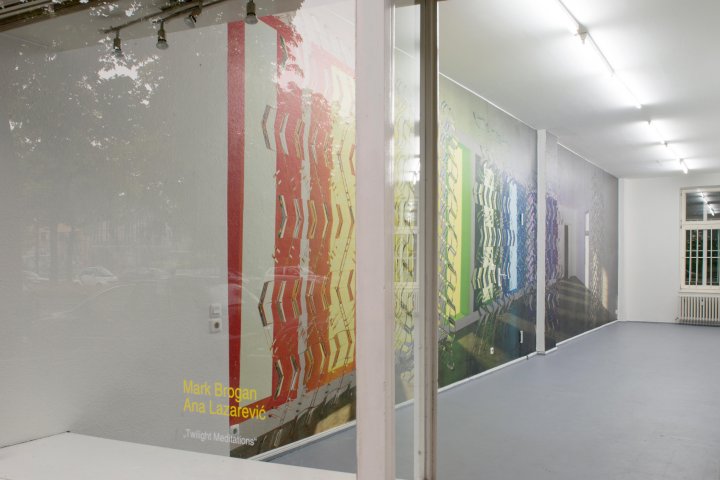
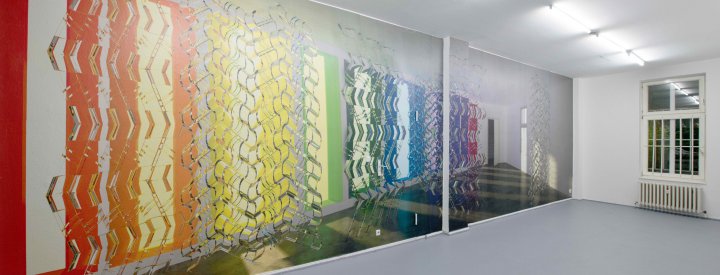
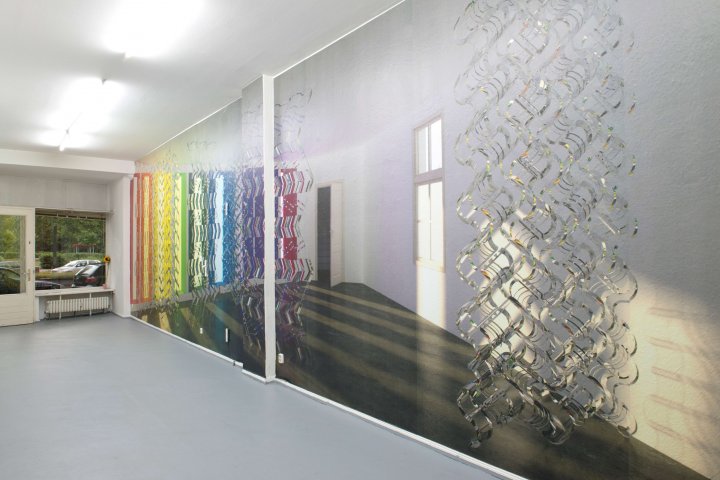
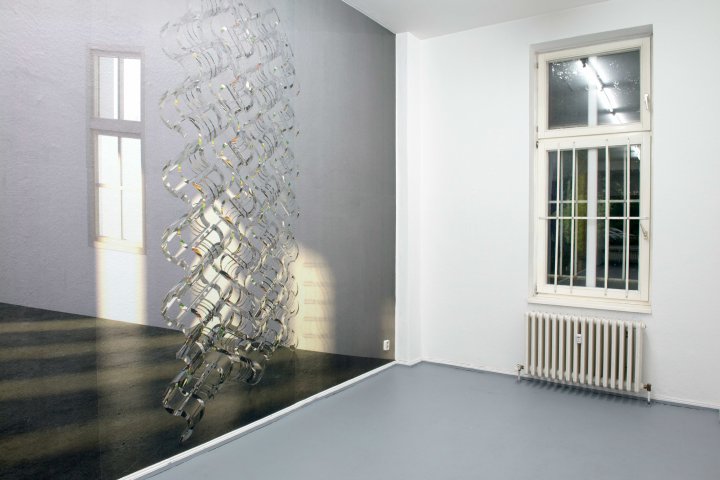
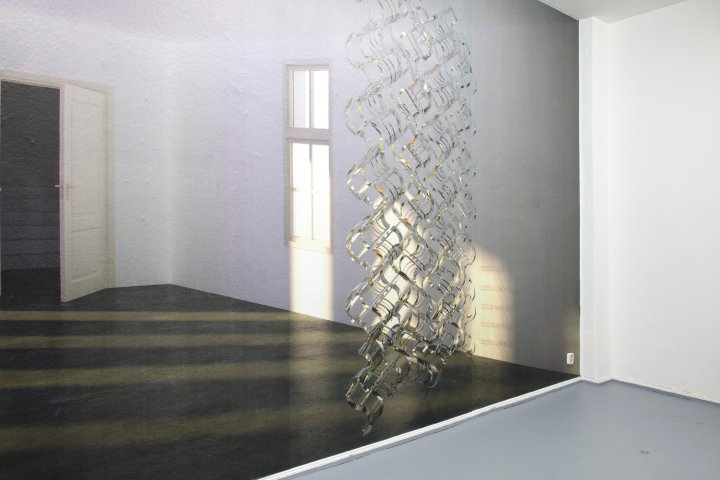
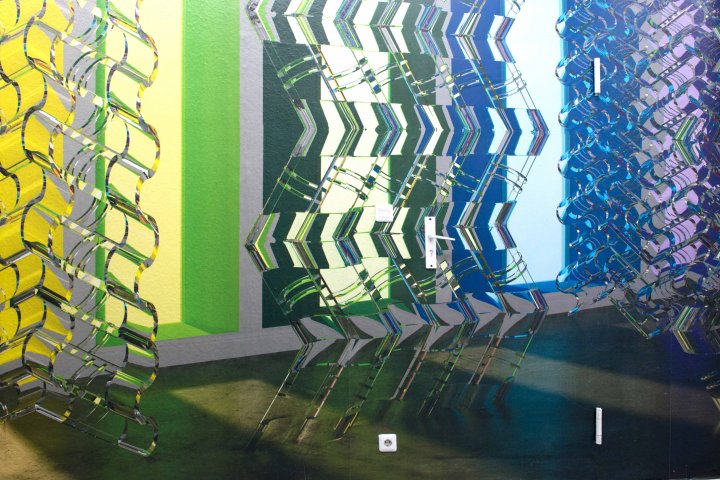

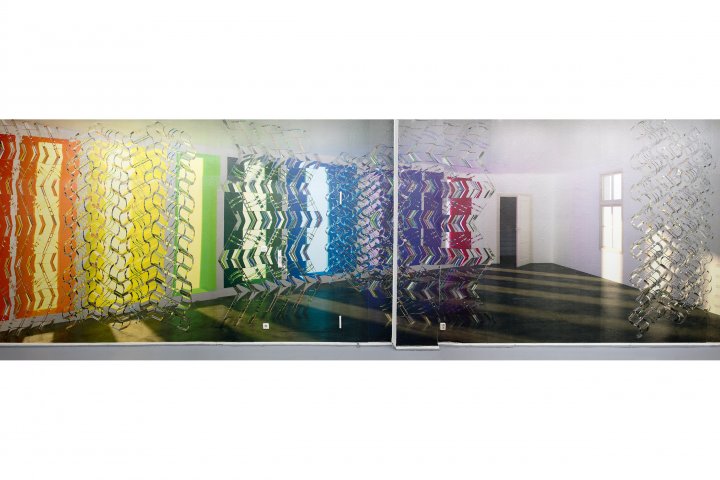
Twilight Meditations
Collaboration with Ana Lazarevic
Billboard paper, 3.40 x 12.20 m, 2014, Secondhome Projects, Berlin, Germany
Photography by Ivonne Thein
The exhibition Twilight Meditations presents a 12 metre long photo wall paper on the longest walls of the Secondhome art space in Berlin. The photo wallpaper shows an image of a virtual space.
When making the layout of the virtual space, inspiration came from the interior of the cathedral Chapel de Notre Dame du Haut by the architect Le Corbusier. One of the main walls in Le Corbusier's cathedral starts as a point and expands to up to 3 metres thick. Le Corbusier made variation the leitmotif of this particular wall. In the wall, he put a patchwork of differently sized rectangular and square windows. He also varied the angles at which the windows opened into the space. Light enters the dark inner space of the cathedral asymmetrically and with differing intensity as determined by the angle and depth of the windows. Also, we looked at the painting The Reverse Side of a Painting by Cornelius Gijsbrechts, from the year 1670. This is a realistic likeness of a framed painting, seen from behind and is painted in the manner of seventeenth century Dutch and Flemish still life painting. To delay consciousness of the trompe l’oeil effect of this work, Gijsbrechts employed the device of contingency. He painted in the irregularities of the wood grain on the canvas stretcher, the pins which hold the stretcher together and the sales room ticket fixed by sealing wax to the back of the canvas. This contingency lends the illusion an authenticity.
We made the wall paper image using architectural modelling software. This creates an image of a fictional space which one can hardly distinguish from a photograph. It is typically used to visualise interiors and buildings before they are actually made. Like Gijsbrechts, we also copied into the poster image the imperfections and specific attributes of the actual gallery space with the help of this software i.e. the texture of the floor. The image is then printed on billboard paper, a support which usually connotes the temporary and transitory.